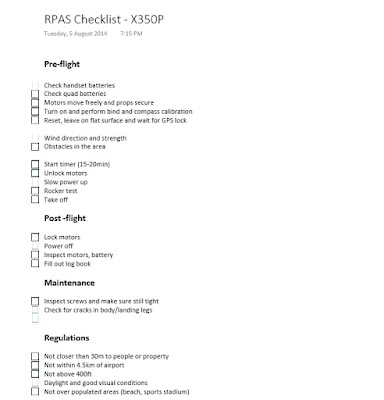 |
| QR X350 Pro and gear ready to create a 3D photomesh of the quarry wall |
Flying conditions were tough on the day with plenty of turbulence around the face of the quarry and getting 'still' images was virtually impossible. In this situation a 2D gimbal would have been very handy and I'm sure the captured images would have been of better quality. Another challenge close to the quarry was getting a GPS lock, I had to take the QR X350 Pro out into the middle of the quarry before it could retrieve enough satellites to fly reliably.
Even though the flying was tough, I am still pleased with the result. The mesh seems quite accurate and has managed to re-create all of the faces of the quarry wall. The results are significantly better than my previous attempt on the pump station. The images are clearer, seem higher resolution and ReCap has managed to stitch them together more accurately this time. I'm not sure if it was the subject of the mesh (the wall), the lighting conditions or the new camera I'm using.
For the next project I am looking forward to learning how to take the mesh out of Autodesk ReCap 360 and into another program where it can be put to use.
See the results of this photogrammetry mission below;
 |
| Looking into the mesh |
 |
| Camera angles that the mesh was created from |





































.png)






















